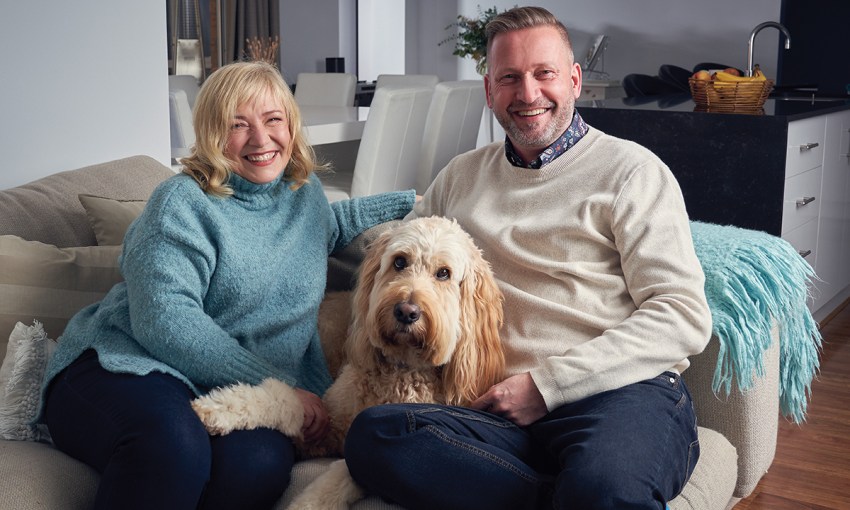As one of South Australia’s leading mental health advocates, John Mannion tells us about his work and how family and home life help him balance his own wellbeing.
Mental health advocate John Mannion: Mind your head
John Mannion can still clearly picture the hospital where he trained as a mental health nurse in the late 1980s. John, who grew up in the northwest of England, remembers the Countess of Chester Hospital on the outskirts of town, a mysterious other world, hidden behind walls and shrouded in secrecy.
“You knew the hospital was there but you never knew what was happening behind those walls,” John says.
“You’d heard about schizophrenia and depression, and it was a fascinating concept to me, about what impact that could have on people. I just wanted to understand more about it.
“But, back in the 1980s, the mental health conversation was had behind closed doors; it was never spoken about openly. There was all that stigma and discrimination around it, like people were not valued for being people just because they had a mental illness. That didn’t seem right to me.”
John began his nursing training in 1988 and today, he is the executive director of the Breakthrough Mental Health Research Foundation, Australia’s only dedicated mental health research charity. He was also recently appointed one of South Australia’s three Mental Health Commissioners, and he is a leading advocate for the one in five people in this state who live with a mental illness.
John says mental illness is an umbrella term that includes anxiety, depression, psychosis, schizophrenia, bipolar disorders, eating disorders and post-traumatic stress syndrome.
“The challenge is that when we label people with these terms, it is easy to lose sight of them as individuals,” he says.
“We have to remember the personal story and the people behind the story. So, for instance, it’s John and John is experiencing depression, it’s not a man with depression. We don’t want to lose sight of the person.
“My passion has been that this is a vulnerable group, that often don’t get a voice. One of the skills we have is our ability to actually talk and represent that voice outside. I love listening to people’s stories. I love connecting with them and striking ways in which we can basically improve people’s lives and trying to do it in a way that’s caring and compassionate.”
While John is mindful there is still a long way to go when it comes to breaking down the stigma around mental illness, he is also very positive about the progress he sees on a daily basis, including during a recent session he ran on Yorke Peninsula.
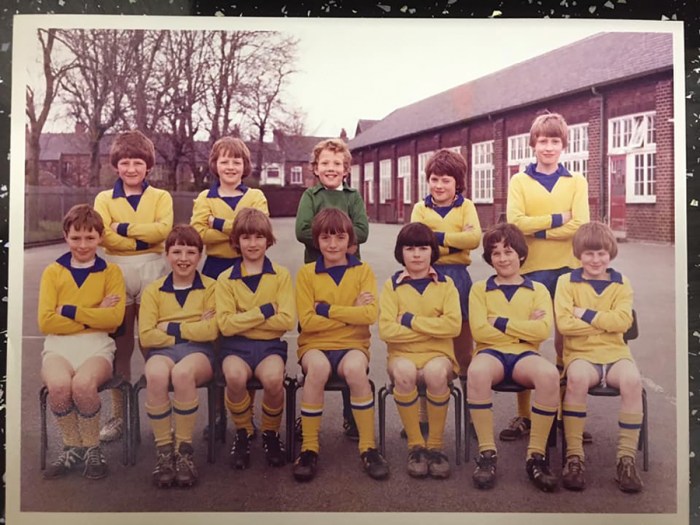
The workshop was held in partnership with Wellbeing SA and Country SA PHN, and more than 80 people attended.
“We were in the back of the Watsacowie brewery, doing a whole day workshop and we had 80 people all having the mental health conversation,” John says.
“People were talking very openly and honestly about the challenges of depression, suicide, and breaking down some of that vulnerability.
“We had people from 19 to 90 years of age, all wanting to share their own stories and connectivity because now we make it safe to have that conversation and we are making it an everyday conversation – that is so empowering. Thirty-three years ago, that would never have happened in that public setting.”
John’s compassion and his ability to connect with people was cultivated early in life. He grew up in the close-knit village of Padgate in the northwest of the UK, with parents Mary and Michael, and six siblings Jane, Tony, Frances, Catherine, Clare and Michael. John is number three in the line-up.
“It was a beautiful, loving family; a very noisy, lively home with lots of activities,” he says.
“It was also a lovely village community with the local school and local church being central to all family activities, with both my mother and father incredibly active and supportive.
“My mum was an incredible role model; she loved people and had a natural ability to help others. During my childhood, my dad had a range of jobs but an important one was he owned a shoe shop, which is very handy when you have seven children! He eventually became the steward of the local parish club which he really enjoyed, being around the social hub of the church and the school.”
It was during his first day on the wards as a student nurse that John met his now-wife, Clare, who was doing her general nursing training.
“Everyone takes the mickey out of me because I met her on day one,” he says. “The timing was terrible because I lived in the nurse’s accommodation where there were five boys with 300 girls.
“She was this beautiful young girl with this incredible smile, everybody talks about Clare’s smile. I saw this very pretty face across the social club and that was it.”
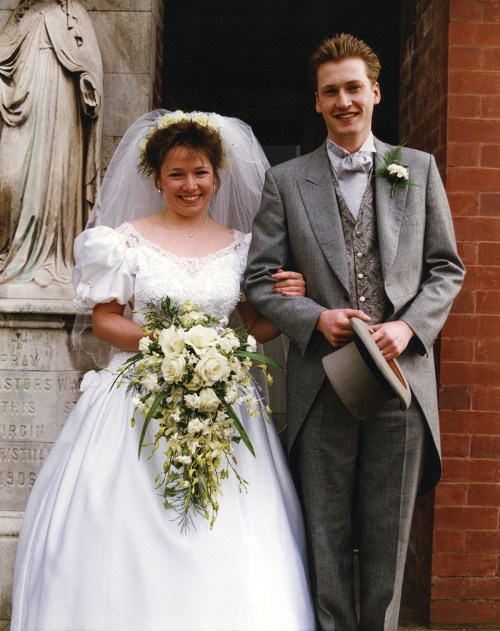
The couple married soon afterwards and had their daughter Niamh, who is now 23.
Both John and Clare, who became a midwife, moved up the nursing ranks quickly, eventually gaining managerial positions with England’s National Health Service, both taking on fulfilling roles.
In 1995, John’s sister Jane had an international placement to Cairns as a dentist, and he and Clare decided to head to Australia for a holiday. They fell in love with the country and eventually moved to Adelaide in 2009.
“A lot of Australians say, ‘Why did you choose Adelaide?’ and we say ‘Why wouldn’t you?’. We are now the world’s third best city to live in so we obviously made the right decision,” John says.
“For us, South Australia has that beautiful mix of not-too-large a city, we didn’t live in the city in the UK. Plus, we have the hills, the vines, the coast and the population is not too big. It’s also been an incredible place to raise our daughter.”
John’s first role in SA was as the principal project officer for mental health at Flinders Hospital. He was then appointed sector manager for Western Mental Health Services at the Queen Elizabeth Hospital, before taking on the role of executive director for clinical mental health services for the Southern Adelaide Local Health Network (SALHN).
John believes that, as a society, we seem to have accepted that one in five people will experience a mental health challenge, and nine Australians suicide every day.
“Yet we don’t accept that for any other illness,” he says. “So, I do think there is a groundswell for saying we shouldn’t be accepting that in the mental health arena. We should be looking for high-quality care that everyone deserves.”
Suicide is the leading cause of death among Australians aged 15 to 24 years, which is why youth mental health is one of the key focus areas for John and his team at the Breakthrough Mental Health Research Foundation.
John says young people grapple with mental illness for a variety of reasons, including the fact that our teenage years are a vital point in our lives when we are negotiating relationships and education, and developing our identities. These big issues are then compounded by the pressures of social media and the ideas around body image.
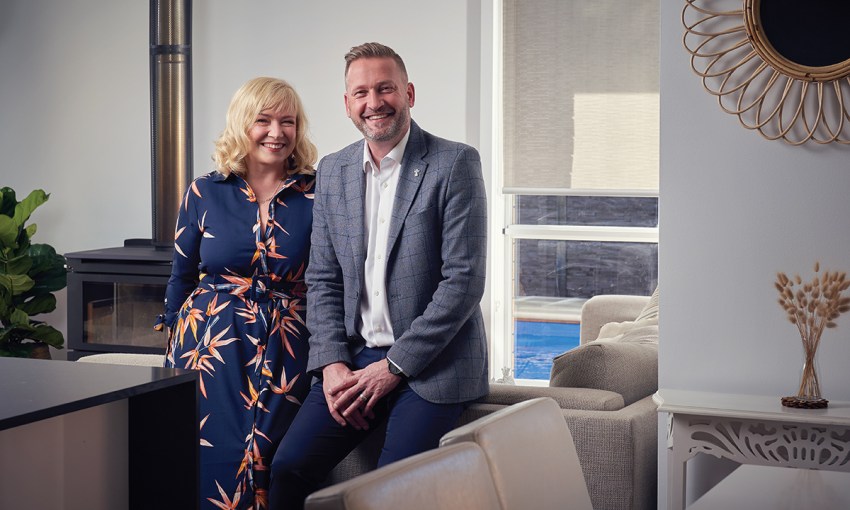
“We see teenagers with high levels of anxiety and depression,” John says.
“We also get presentations for eating disorders in our emergency departments and paediatric departments in children as young as nine.”
Alarmingly, John says there has also been a high presentation of younger children experiencing psychotic episodes, the first onset of symptoms in children as young as 11.
“We know that 50 per cent of first presentations of mental illness occur before the age of 16, so our need to provide effective and high-quality support to the young person and their family is paramount,” John says.
Breakthrough, which John helped establish in 2018, has funded more than 20 leading research projects in SA this year across its four focus areas – youth mental health, depression, Aboriginal mental health and eating disorders.
John says we are lucky to have global leaders in mental health research based here in South Australia, including Professor Tracy Wade from Flinders University, who specialises in the treatment of eating disorders.
Professor Wade heads up the Statewide Eating Disorder Service, which is a mental health service supporting young people dealing with conditions such as anorexia and bulimia. She has also been involved in the development of a program called Media Smart, a media literacy program aimed at students in late primary school and early high school years.
“It’s a beautiful program because it actually looks at the impact of social media and the concept of unrealistic body image and how pictures in the magazines are not real,” John says.
“Then there are tools that help young people with perfectionism. Professor Wade has developed a range of materials that help with high-functioning perfectionist personality traits. These are children who are the A-star, top of everything and their perfectionism drives a whole range of other behaviours where they need to control what’s happening.
“Our brains are still developing until the age of 22, so we know we see these first presentations from this early age, which is why we talk about getting interventions into place for children very, very quickly. The earlier the intervention, the better the prognosis for younger people.”
John’s advice for parents or anyone concerned about the mental health of a young person is to first talk to your child and try to find out what is actually happening.
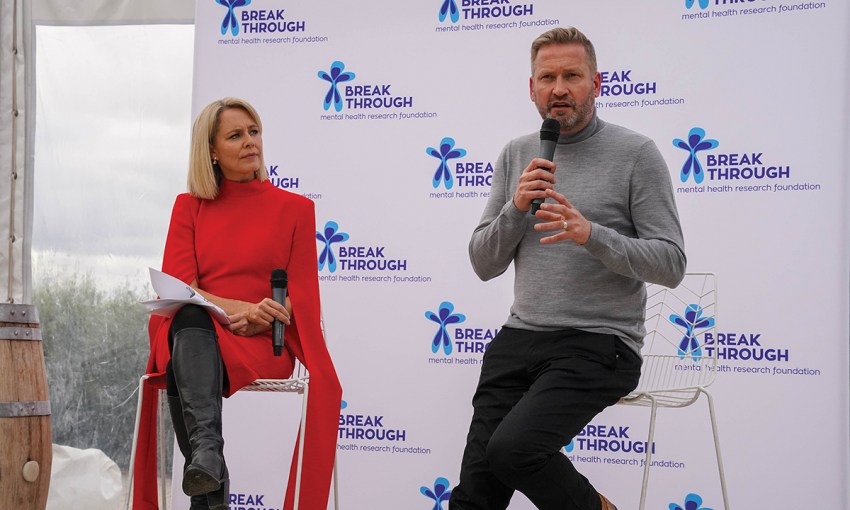
“Make it safe for them, give them time and don’t try to fix it for them, because at that point in time they don’t need mum and dad to fix it,” John says.
“My daughter’s favourite line is, ‘Dad I need to tell you something, I just want you to listen now’. If we are not actively listening and we start to problem solve, then we are not listening to what is being told to us and we’ll miss out on things.
“Let them know they are safe and that you are always there. Don’t judge the behaviour they’re coming out with because the behaviour may be the only way they can actually physically express what is happening to them.”
Talking to the teacher is another avenue for parents, checking in to see if there have been any changes in behaviour at school or issues with friendships or schoolwork. Breakthrough Foundation has funded a program called Preparation, Education, Action, Coping, Evaluation (PEACE), an anti-bullying guide that has been rolled out in schools over the past few years. The program was developed by Professor Phillip Slee and Dr Grace Skrzypiec from Flinders University and has seen a 50 per cent reduction in bullying in some instances.
“We know that if a child has a friend at school, it reduces their risk to bullying. We know that this is the first responder, the support they need isn’t usually a teacher or a parent, it’s their best friend,” John says.
“We are able to empower those children to understand those thoughts, feelings and emotions and that can be really powerfully helpful.
“Another program we are excited about developing is called Big Talk for Little People, which we’ve done in partnership with the Little Heroes Foundation, developing a primary school mental health conversation. This is about getting children at a young age to understand thoughts and feelings and how they can reach out for help.”
The Breakthrough team works closely with other not-for-profits and organisations including the James and Diana Ramsey Foundation, SANFL, Adelaide Footy League and Sports SA.
“I love the diversity of the role with Breakthrough,” John says. “It allows you to take your knowledge of the mental health world but also your connectivity with the community and start to find ways in which you can change the narrative – so connecting with people with lived experience, sharing their stories, connecting them with researchers who are going to find the answers and then investing in that research.”
Alongside his role with Breakthrough, John was recently appointed as one of SA’s Mental Health Commissioners, advising the state government on the mental health agenda, as well as being an advocate for SA at the round table in Canberra.
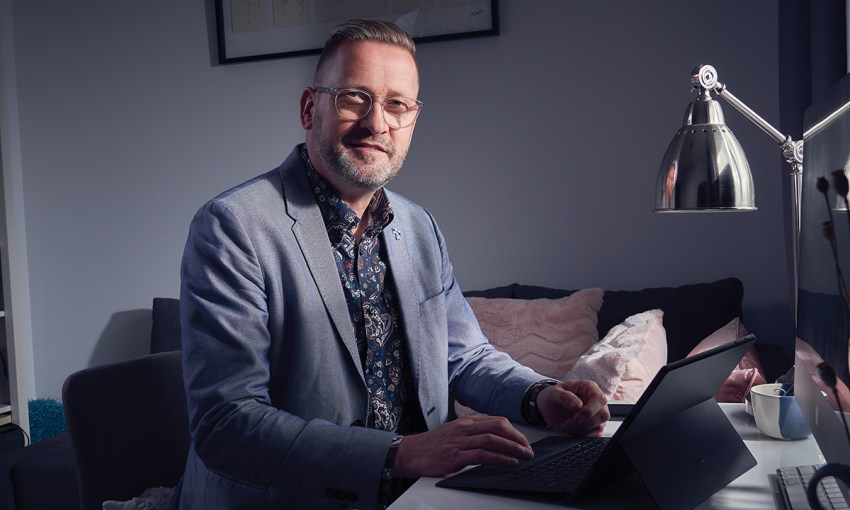
Of the $168 million allocated to mental health in the recent state budget, John believes “any investment in mental health is exciting. No one is going to complain about that”.
“From a service perspective, the money goes to the pointy end; to the crisis piece. It goes to the development of a new crisis centre in the north, it goes into investing into developing community teams, into the older people’s services and it is very much focused on that flow concept and some of the triggers in relation to the ramping in emergency departments.”
John admits emergency departments are not the right environments for acute mental health patients, and developments such as the new Urgent Mental Health Care Centre in the city are a step in the right direction.
“When someone is in crisis and trauma and they’re reaching out for help, somewhere like the Urgent Care Centre feels as home-like as a clinical setting can be; it’s open, it’s light and it’s got the ability to be calming in nature. It’s not an emergency department.
“EDs are designed to provide emergency intervention for a high complexity of presentations and they do that wonderfully, but the way in which that is done, the environment, the noise, the speed, that is not the environment you want for someone who is in distress and trauma. That’s just how our systems have been designed, our EDs have become the default. Wouldn’t it be incredible if we could develop a whole range of alternatives in the first place? Because every one of us is unique; we don’t fit into a box. Let’s not design services that are in boxes.”
John says he is as excited about mental health today as he was when he first walked onto those wards all those years ago. He says he is still learning every day and acquiring new skills through what he calls “compassionate connectivity”.
“The compassionate approach is acknowledging the trauma they’ve experienced is real for them and you hear them. The connectivity part is then trying to really come up with a solution together because ultimately I can’t fix something for someone else, but I can stand next to them and help them and support them on their way.”
Having a loving, supportive home life helps John maintain his own mental health.
“Clare provides incredible support and freedom for me to do what I need to do,” he says. “When asked if Clare would like to make a donation to charity, she says she’s already donated the husband. So, I think that’s a lovely summary.
“We’ve also got a beautiful groodle, Ted, who provides all the love and connectivity and play that we could actually need – and that keeps us grounded, which is lovely. I’ve also got beautiful friends, so I’m very fortunate to actually have all those connections. And I’m a fanatic of sports of any nature.”
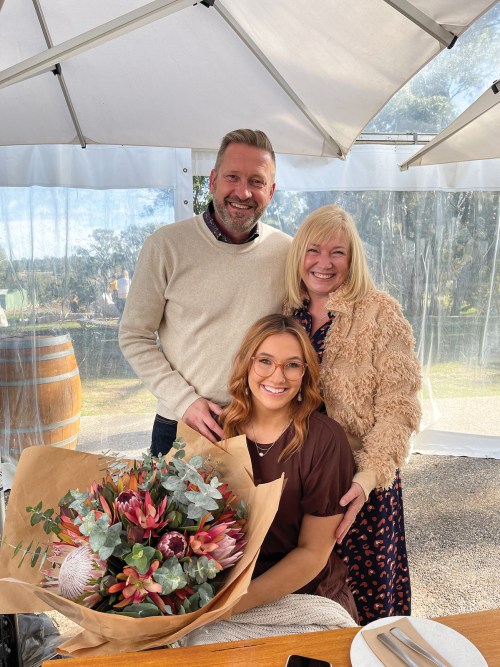
John and Clare’s daughter Niamh has followed a similar path to her parents in a caring role, having just completed a bachelor of disability and developmental education. She has already gained work as a developmental educator at I Can Jump Puddles.
Clare has given up nursing and, after a stint as a florist, she is now a marriage celebrant.
“She says that delivering flowers to a bride was more stressful than delivering babies,” John laughs.
Being able to change the outcome of someone’s life remains at the heart of John’s work in mental health, and he says he’s ready for the challenges that still lay ahead.
“The mental health arena is still very complex but there are so many incredible people wanting to make a difference,” he says.
“Ultimately, I want to leave the mental health world in a better place than when we first started and that work will probably never stop.”
This story first appeared in the August 2021 issue of SALIFE magazine.
including free delivery to your door.



